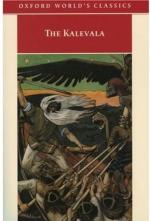|
This section contains 507 words (approx. 2 pages at 400 words per page) |

|
Nineteenth-century Finns looked at their ancient poetry and saw allegories for their current political situation. Thus the Kalevala mythology provided people of various backgrounds with a common frame of reference for describing then-world and investing their own experiences with meaning.
Like all dreams, the "mythological dream of the Finnish people" expressed itself through the language of symbols. The oak that blotted out the sun might represent the shadow of foreign rule, and Pohjola could be equated with any enemy of the Finns. The reassembly and revival of Lemminkainen could be read as a metaphor for Finnish culture itself, with the folklorists playing the part of Lemminkainen's mother, singing the dispersed parts of a great whole back into life. Much of the literature of the day invoked Kullervo as the embodiment of social revolution. The Kalevala is full of such symbols, but the most potent of all is...
|
This section contains 507 words (approx. 2 pages at 400 words per page) |

|




